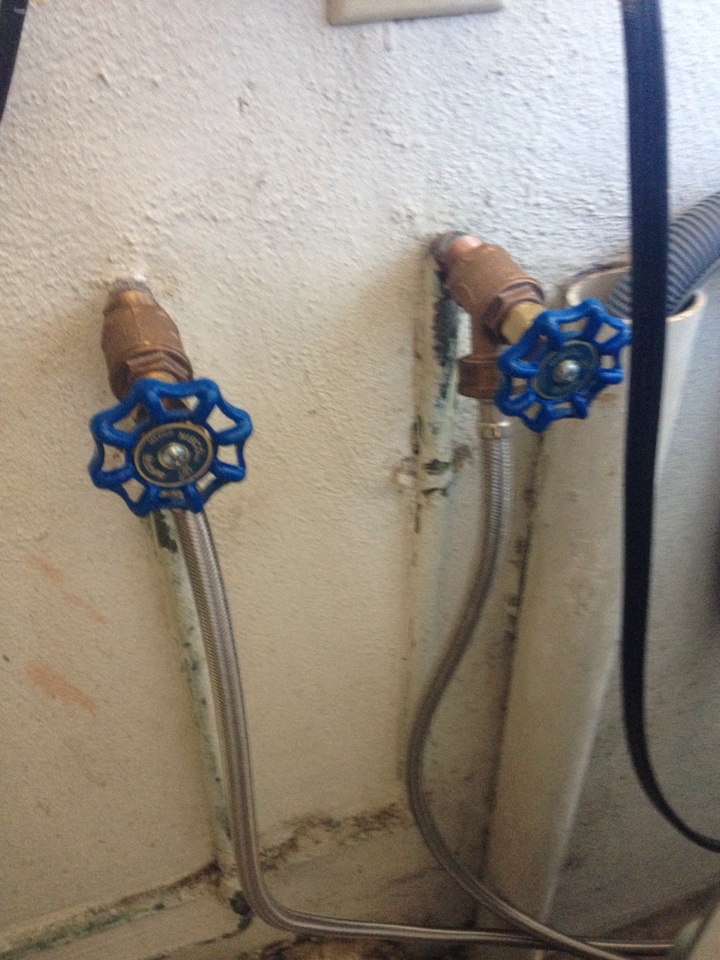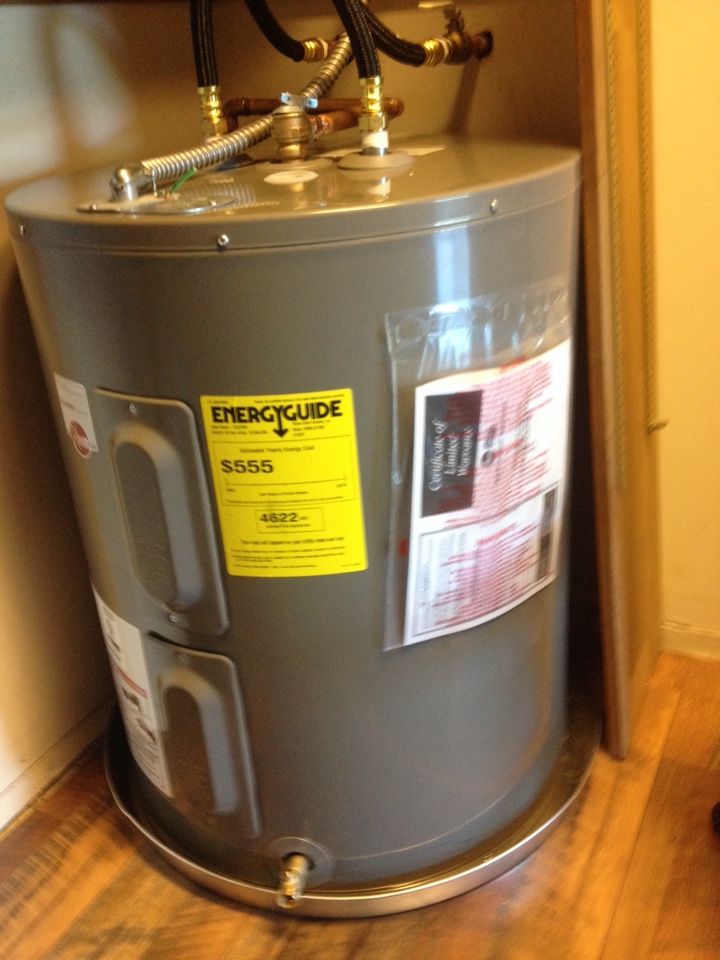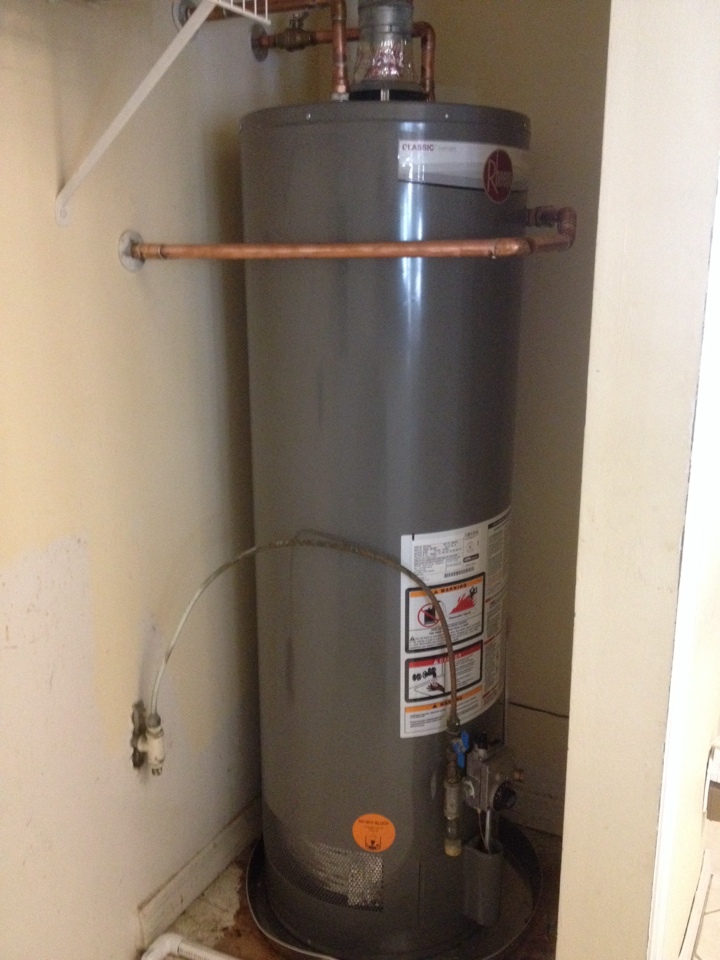The Metropolitan Water District of Southern California is the largest supplier of treated water in the US. The name is usually shortened to the "Metropolitan Water District", "the Met", or simply "MWD". It is a cooperative of 14 cities and 12 municipal water districts that indirectly provides water to 18 million people in its 5,200-square-mile (13,000 km2) service area. It was created by an act of the California Legislature in 1928, primarily to build and operate the Colorado River Aqueduct. MWD became the first (and largest) contractor to the State Water Project in 1960.
It includes parts of Los Angeles, Orange, San Diego, Riverside, San Bernardino and Ventura counties. The district covers primarily the coastal and most heavily populated portions of Southern California; however large portions of San Diego, San Bernardino and Riverside counties are located outside of its service area.
The MWD headquarters is located at 700 North Alameda Street in downtown Los Angeles, adjacent to Union Station.

History
The Metropolitan Water District was formed in 1928 to build and operate a means to import water from the Colorado River to southern California: the Colorado River Aqueduct. The MWD is governed by a board of 37 directors whose powers and functions are specified in the 1927 authorization act. This board was in charge of issuing bonds and financing their repayment by selling water to member agencies. In the early years, revenue from water sales was too low, so MWD also collected taxes that ranged from 0.25 to 0.50 percent of assessed value. Ninety percent of the cost of the aqueduct has been paid for by the taxpayers. In 1929 the district was set up with an area of 600 square miles (1,600 km2) and served a population of around 1,600,000 in 13 cities.
During the aqueduct's first five years of service from 1941 to 1946 it delivered an average of about 27,000 acre feet (33,000,000 m3) of water, using less than 2% of its capacity. Only one pump at each lift, operating from one to six months out of the year, was needed to meet all the demands made on the system. At this time due, to availability of ground water, less than 10% of the Colorado River Aqueduct's capacity was used, only 178,000 acre feet (220,000,000 m3) of water.
With too much water and too little revenue, MWD's directors searched for new sources of demand. They found a semi-willing partner in the San Diego County Water Authority, which joined MWD as its first wholesale member agency in 1946. SDCWA was formed in 1944 to facilitate joining MWD, but did not do so until those opposed (mostly because of resentment of Los Angeles's dominance of MWD) were defeated by those in favor (FDR ordered the Navy to connect SDCWA to MWD; after WWII ended, dwindling supplies did the rest of the job). SDCWA got its first deliveries in 1947 and was buying half of MWD's water by 1949. The SDCWA annexation broke two traditions at MWD: Member agencies had previously been cities (SDCWA was a water wholesaler) in the south coast basin (SDCWA was south of the basin). The next "break" came in 1950, when Pomona MWD (now Three Valleys MWD) joined MWD. Since Pomona was a largely agricultural member agency, MWD was no longer selling water for "domestic use".
In 1952, MWD began a 200 million dollar program to bring the Colorado River Aqueduct to its full capacity of 1,212,000 acre feet (1.495×109 m3) annually. The Colorado River Aqueduct added six pumps to the original three at each of its five pumping stations. CRA pumping expanded from about 16,500 acre feet (20,400,000 m3) of water in 1950 to about 1,029,000 acre feet (1.269×109 m3) by 1960. On August 9, 1962, the MWD set an all-time delivery record of 1,316,000,000 gallons of water in just a 24-hour period.
Met's additional supplies and easier rules of entry facilitated an expansion through annexation of large areas of low populations: The eight MWDs that joined from 1946 to 1955 added 200 percent to Met's service area but only 75 percent to Met's population served. By 1965, Met had 13 cities and 13 municipal water districts as members. It covered more than 4,500 square miles (12,000 km2) in the counties of Los Angeles, Ventura, Orange, San Diego, Riverside, and San Bernardino--and served some 10,000,000 people.
As of 2008 Met has 14 cities and 12 municipal water districts (San Fernando joined in 1973; MWDOC and Coastal MWD merged in 2001) and provides purified drinking water to nearly 18,000,000 people.
Water sources
The State Water Project moves water from the Sacramento-San Joaquin River Delta, via the California Aqueduct to southern California. The water diverted from the Delta is provided via transfer at Lake Oroville on the Feather River. During the dry season Oroville Dam releases additional water into the Feather, which eventually flows into the Sacramento River and the Delta, allowing water diversion while maintaining a minimum freshwater outflow from the Delta to the Pacific. Once the California Aqueduct reaches southern California, it is split between the West Branch, storing water in Castaic Lake for delivery to the west side of the Los Angeles metropolitan area, and the East Branch, which delivers water to the Inland Empire and the south and east parts of the Los Angeles Basin.
The Colorado River Aqueduct begins at Lake Havasu, the reservoir of Parker Dam, and travels 242 miles (389 km) west to Lake Mathews. Water is first pumped 125 miles (201 km) uphill through a series of five pumping plants approaching Chiriaco Summit, then flows 117 miles (188 km) downhill towards Los Angeles.
On paper, Metropolitan should get about 2 MAF/Y (million acre feet per year) from the State Water Project (SWP) and 1.35 MAF/Y from the Colorado River Aqueduct (CRA). Between 1984 and 2004 the actual deliveries were 0.7 MAF/Y from the SWP and 1.2 MAF/Y from the CRA. The SWP allotment is rarely met, if at all, due to restrictions on the amount of water that can be pumped from the Delta. A minimum freshwater flow has to pass through the Delta in order to prevent salinity intrusion from San Francisco Bay, and the removal of freshwater from the Delta has also threatened multiple species, such as native chinook salmon.
The Inland Feeder project added a direct tunnel and pipeline connection from Silverwood Lake to Diamond Valley Lake and was completed in 2010.

Reservoirs
The Metropolitan Water District of Southern California reservoirs store fresh water for use in Los Angeles, Orange, Ventura, Riverside, San Bernardino, and San Diego counties. These reservoirs were built specifically to preserve water during times of drought, and are in place for emergencies uses such as earthquake, floods or other events.
The MWD maintains three major water reservoirs. One is Lake Mathews located in southwest Riverside, California, with a capacity of 182,000 acre feet (224,000,000 m3) of water. Another is Lake Skinner located south of Hemet in Riverside County, its capacity is 44,000 acre feet (54,000,000 m3) of water. Diamond Valley Lake is their third and newest reservoir, with a capacity of 810,000 acre feet (1.00×109 m3) of water. This capacity is over twice as large as that of Castaic Lake, the next largest reservoir in Southern California maintained by the state Department of Water Resources.
The MWD partly funded the Brock Reservoir project with $28.6 million. In return for their contribution, California can each use 100,000 acre feet (120,000,000 m3) of water starting in 2016.
Purification and treatment
The Metropolitan Water District (MWD) operates five treatment plants:
- Robert B. Diemer Treatment Plant in Yorba Linda
- Joseph Jensen Treatment Plant in Granada Hills, due to a multi-million dollar expansion, it is believed to be the largest treatment plant west of the Mississippi River, delivering up to 750 million gallons per day.
- Henry J. Mills Treatment Plant in Riverside
- Robert A. Skinner Treatment Plant in Winchester, is now the second largest water treatment facility at MWD after its multimillion dollar expansion, delivering up to 630 million gallons per day.
- F.E. Weymouth Treatment Plant, a 58,800-square-foot (5,460 m2) facility in La Verne
They collectively filter water for more than 17 million Southern Californians. The MWD employs over 2,100 people to maintain and do research at these facilities, including scientists specializing in chemistry, microbiology, and limnology (the study of lakes and rivers).
Water purification proceeds through the following steps:
- Screening with relativelly coarse sieves removes larger debris such as sticks and leaves.
- Primary disinfection with chlorine. Several of Metropolitan's treatment plants are now using ozone instead of chlorine as a primary disinfectant.
- Addition of flocculant chemicals such as ferric chloride and organic polymers to encourage smaller particles to clump together.
- Sedimentation to allow the clumps to settle out of the water.
- Filtration to remove remaining particles.
- Next, more chlorine is added to the water to disinfect and prevent any illness due to water-borne pathogens.
- Lastly, ammonia is added to the water to react with the chlorine to form chloramines. Chloramines are used to maintain a residual disinfectant throughout the water distribution system.
- After purification, sodium hydroxide is added to adjust the pH level to protect the pipes and plumbing fixtures, and fluoride is added to the water to help prevent dental caries in children.
Every year trained scientists and technicians perform more than 320,000 analytical tests on more than 50,000 samples. Metropolitan Water District has various EPA Environmental Protection Agency approved methods used to for the detection of bacteria, viruses, protozoan parasites, chemical contaminants and toxins.
Members
MWD list of member agencies:

See also
- Water supply and sanitation in the United States
- United States Environmental Protection Agency
- Colorado River Aqueduct
- Los Angeles Department of Water and Power
- Southern California World Water Forum
References

External links
- Metropolitan Water District of Southern California
Interesting Informations
Looking products related to this topic, find out at Amazon.com
Source of the article : here


EmoticonEmoticon